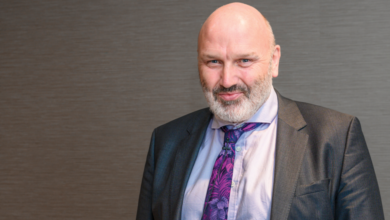NBP: Problematic privatisation


Ireland lags behind its European peers when it comes to the delivery of broadband infrastructure, especially in rural areas. Dónal Palcic, an economics lecturer in the University of Limerick, explores the limitations of privatisation and argues that the only entity capable of delivering rural broadband is the State.
The roots of the ongoing debacle with the implementation of the National Broadband Plan (NBP) can be traced back to the privatisation of Eircom. Almost two decades have passed since the Government’s decision to sell its entire stake in the company in July 1999. Ireland was unique in this regard, with all other western European countries choosing to privatise their national operators in stages or retaining ‘golden shares’ that allowed for the vetoing of future undesirable changes in ownership. The Irish government’s decision to eschew these options left it powerless to prevent the highly leveraged buyouts of Eircom’s fixed line business in 2001 (after Eircell was sold to Vodafone) and 2006. The consequent enormous increases in Eircom’s debt levels resulted in the company’s bankruptcy in 2012. This outcome was mainly due to the short-termist strategies adopted by Eircom’s successive private equity group owners. These included high leverage, cash extraction and underinvestment in the fixed-line network. This business model also had significant wider economic and social effects, with Ireland perennially lagging behind most of its European counterparts in relation to the development of broadband infrastructure, particularly in rural areas.
So, what has been the reaction of successive governments to this underinvestment in rural broadband infrastructure since Eircom’s privatisation? In short, too little and too late. Programmes such as the County and Group Broadband Scheme, Metropolitan Area Networks (MANs) scheme and National Broadband Scheme all provided some minor stimulus to investment in basic broadband infrastructure in rural areas prior to 2010. Since then, however, plans for investment in higher speed infrastructure have been perpetually delayed. The NBP was first published six years ago but little progress was made. An updated NBP intervention plan was then published in December 2015 that promised a minimum download speed of 30Mbps for every home and business in the country by 2020. The government announced that it was adopting a gap funding model to procure the infrastructure. This involves the provision of public funds to a private operator to help roll out the network that the operator would retain ownership over. A full concession PPP model and three other procurement options that involved varying degrees of state ownership were also considered but ultimately rejected due to the higher cost involved.
At the very outset of the NBP tendering process, it was clear that only two of the three shortlisted bidders – Eir and Siro (the joint venture between the ESB and Vodafone) – were realistic contenders, since both have fixed line connections to virtually every home in the country. Eir’s manipulation of the NBP tendering process since it commenced was therefore entirely predictable given its position as the incumbent fixed line telecoms operator. Eir’s announcement in early 2017 that it could deliver high-speed broadband to approximately 300,000 homes within the NBP intervention area was textbook gaming. Unsurprisingly, these homes were the most commercially viable in the intervention area. It also meant that the investment required to connect the remaining 540,000 homes in the most remote areas would require a higher subsidy, since this would rely heavily on the use of Eir’s network infrastructure and the cost of this access.
It was no surprise when Siro subsequently decided to drop out of the competition because of the deal with Eir. Nor was it a major surprise when Eir itself then pulled out since it will still stand to benefit from the use of its infrastructure if the NBP proceeds. What is surprising is the Government’s insistence that it will proceed with the plan despite a number of obvious issues. First, the lack of competition now existent within the process. Second, the questions over the capacity of Enet, the sole remaining bidder, to deliver without the backing of a major utility partner given SSE’s recent withdrawal from its consortium. Lastly, the lack of clarity over the amount of subsidy that will be required. A potential cost to the Exchequer of approximately €1 billion has been quoted in recent media reports, however, the final subsidy required will depend heavily on the price of access to Eir’s network.
“The Government is completely beholden to private interests in its attempts to bridge Ireland’s ever-widening digital divide.”
The common thread in Ireland’s experience with underinvestment in broadband infrastructure outside of urban areas is Eir. The company’s stifling of competition in the fixed line market from 2001 onwards coupled with severe cuts to its capital expenditure following the two buyouts in 2001 and 2006 meant that Ireland consistently lagged behind its European counterparts on most broadband scorecard indicators prior to 2012. While Eir has since increased its investment post-bankruptcy, and other companies such as Virgin Media (formerly UPC) have invested heavily in high-speed broadband in major cities, rural areas continue to suffer from inadequate service. The ongoing saga with the NBP again serves to highlight the central role of Eir’s network and how the Government is completely beholden to private interests in its attempts to bridge Ireland’s ever-widening digital divide.
When one reviews the history of Ireland’s fixed-line telecommunications sector since Eircom was privatised in 1999 it is difficult not to conclude that the only realistic way of finally resolving the issue of underinvestment in rural broadband infrastructure is for the State to provide it directly itself. Fine Gael’s own NewERA plan published in 2010 envisaged establishing a new telecoms utility called Broadband 21, which would amalgamate the telecoms assets of existing SOEs such as the ESB, Bord Gáis, CIÉ and the MANs to create a new national, open access, next generation broadband network. The plan stated that €1.8 billion would be invested over four years with the goal of getting Irish broadband speeds into the top five among OECD countries. The amalgamation of existing state-owned telecoms assets has never materialised, and one has to wonder why the current Government is now willing to provide subsidies, which could amount to €1 billion or more, to a private operator who will then own and control the infrastructure. The Government should instead invest directly itself (or with the private sector as part of a joint venture) and finally regain control over the extent and pace of telecoms infrastructure in rural areas.
Through its ownership of all of the other major utility networks in the country, the Government can also ensure the cost of investing in broadband infrastructure can be reduced. The single biggest cost in rolling out fibre is the civil works required to do so. The coordination of civil works by our various utility network companies would help lower the overall cost of investment for all. In addition, making the provision of ducting in all relevant public works and infrastructural development programmes mandatory would further reduce the cost of deploying fibre in the future. It is time for the Government to recognise the mistakes of the past and play a far stronger and more proactive role in the development of rural broadband infrastructure. Waiting for the private sector to provide the necessary investment with the odd injection of public stimulus at various stages over the past fifteen years has clearly not worked. A continuation of this strategy will only lead to further delays in investment and the continued demise of rural areas already suffering from post office closures and a minimal level of public transport services.
Profile: Dónal Palcic
 Dónal Palcic is a lecturer in economics at the Kemmy Business School in the University of Limerick. His primary area of research is in public sector economics with a particular focus on infrastructure policy, public enterprise, privatisation and public-private partnerships. Dónal has published a number of economic studies on these topics in international peer-reviewed journals and edited books. He has also co-authored a book titled Privatisation in Ireland: Lessons from a European Economy (Palgrave Macmillan, 2011). In 2016, Donal spent five months as a Visiting Research Fellow at the Cornell Program for Infrastructure Policy in the Department of Policy Analysis and Management at Cornell University (USA).
Dónal Palcic is a lecturer in economics at the Kemmy Business School in the University of Limerick. His primary area of research is in public sector economics with a particular focus on infrastructure policy, public enterprise, privatisation and public-private partnerships. Dónal has published a number of economic studies on these topics in international peer-reviewed journals and edited books. He has also co-authored a book titled Privatisation in Ireland: Lessons from a European Economy (Palgrave Macmillan, 2011). In 2016, Donal spent five months as a Visiting Research Fellow at the Cornell Program for Infrastructure Policy in the Department of Policy Analysis and Management at Cornell University (USA).





